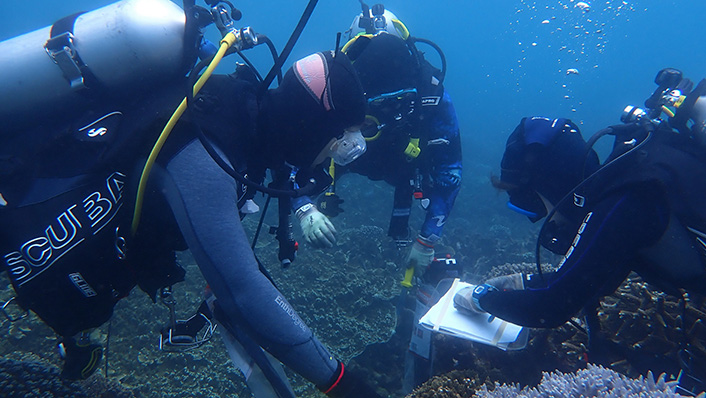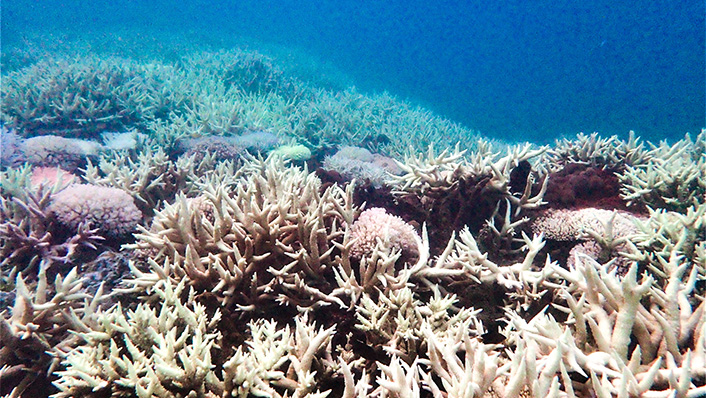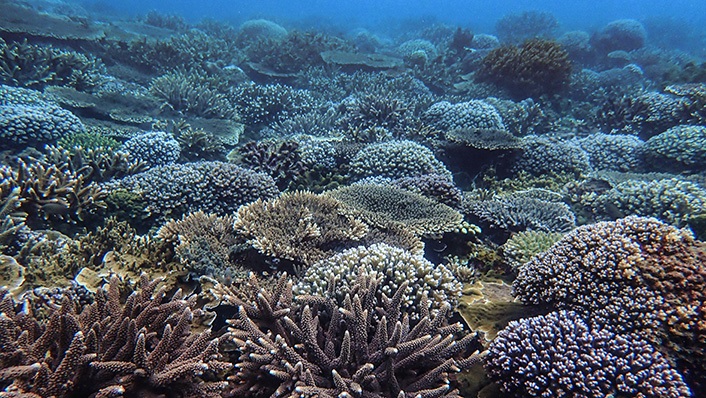Corals in the Keppel Islands of the southern Great Barrier Reef survived and recovered from a severe bleaching event in 2020, indicating the high resilience of corals in the region, new research by the Australian Institute of Marine Science (AIMS) has found.
The severe bleaching in Woppaburra sea Country, near Yeppoon, was part of the 2020 mass bleaching event of the Great Barrier Reef and affected 75%-98% of coral around the islands.
But despite these corals being exposed to accumulated heat that often results in mortality, coral cover in the region was found to have remained stable, with very little mortality occurring.

AIMS scientist Dr Cathie Page said the recovery following the bleaching event was driven by the easing of thermal stress in the region, possibly aided by environmental factors typical of the area like increased turbidity and large tidal flows.
But she warned that the corals might not fare so well in future events under a warming climate because cooler recovery periods are diminishing, nullifying the benefits of high turbidity and water flow.
"Reefs in this region are considered 'highly disturbed' and have been impacted by six major flooding events, four cyclones, four major storms and six coral bleaching events driven by marine heatwaves over the last 30 years," said Dr Page. "They have been through a lot and we wanted to know more about what makes them so tough.

"Our research indicates strong recovery following the 2020 event.
"The Keppel region is characterised by a large tidal range and strong currents which can help to reduce water temperatures, provide sun protection and deliver extra food. Inshore corals are adept at feeding on the organic matter which is resuspended by these currents and that provide nutrition in the absence of the coral's algal symbionts, which are lost in bleaching events."
For the study, the team surveyed six reefs in different areas of the Keppel Island region in early April 2020 during the marine heatwave which caused severe bleaching. They surveyed these reefs, and an additional three sites, again in June and October 2020 to document the recovery of different species.

Dr Page said the Keppel reefs are dominated by fast-growing species in the Acropora family, which are highly susceptible to bleaching, but which they found mostly survived this event.
"It may be that the frequent disturbances over 30 years have helped them adapt to a degree," she added. "But it is unknown how long they and resilient corals in other regions can retain their ability to recover from bleaching events if they increase in frequency and intensity in a warming world.
"Frequent and severe bleaching events, such as the 2020 event we studied, highlight the importance of actions that slow and limit climate change.
"The study also shows the importance of studying coral recovery after bleaching events and other disturbances so we better understand the complex dynamics at play in different areas of the Great Barrier Reef. This will help us to predict how different reefs will respond."
Dr Page added the knowledge gained from the Keppels study may allow scientists to identify reefs in different regions that might be particularly resilient to future bleaching events. They could serve as a natural source of coral larvae for the seeding of other reefs in a region. Coral seeding is a promising approach to help accelerate reef recovery on the Great Barrier Reef and around the world.
The research was published in the journal Ecosphere.
The research was carried out as part of the Woppaburra Coral Project, a component of the Australian Coral Reef Resilience Initiative, a research partnership between AIMS and BHP.
Feature image courtesy of Scott Gardner






